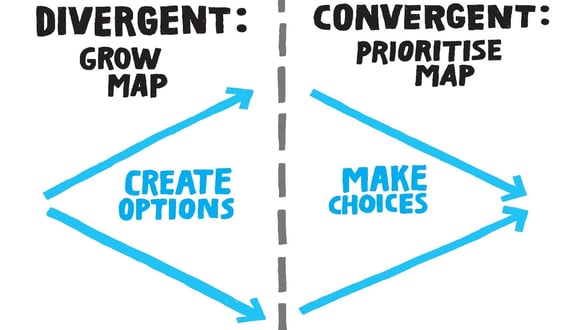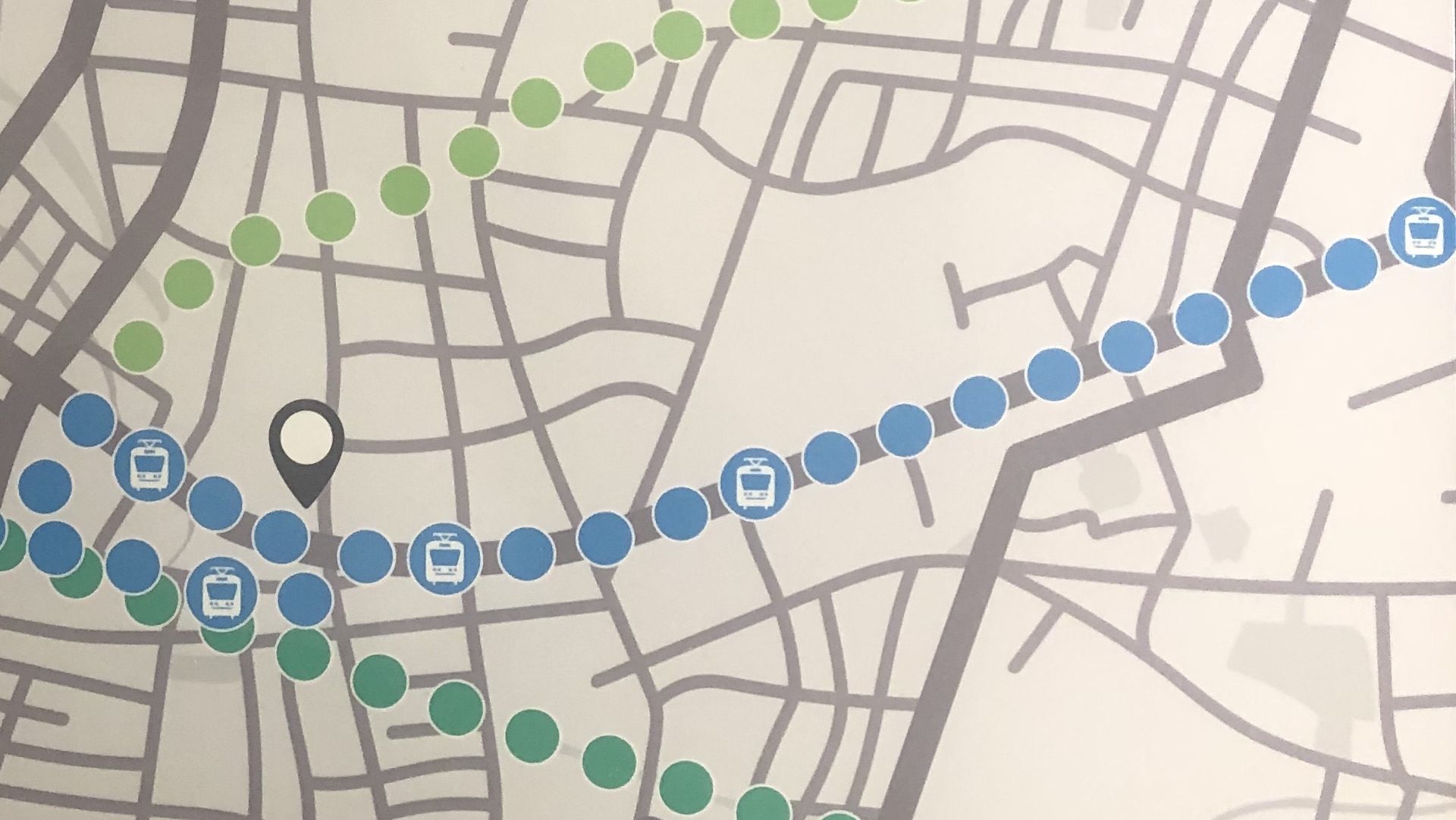Here’s an exercise for you: the next time you talk to a member on one of your product delivery teams, ask them how the deliverables they’re working on connects to one of your business goals. If you’re like most organizations, that may be a struggle.
Product development is a messy process, and user stories don't always make a clear connection to your business objectives. Designers and developers aren’t just executing off your backlog. Every day they’re making many decisions that affect the product. The more they understand the business goal and the customer problem you’re solving, the better they’re set up for success building products.
There’s a tendency for agile delivery teams to use scrum metrics such as burndown charts and story points to measure success, a practice Jeff Patton describes as “underpants gnome metrics.” But a burndown chart doesn’t measure business value, it measures the time spent shipping features that may or may not help you meet your overall business objectives. And at the end of the day, no one wants to ship features that don’t matter.
Impact mapping is a visual mapping technique for software product development. Gojko Adzic invented Impact Maps as a strategic planning technique to help stakeholders and product delivery teams gain a shared understanding of business objectives, their connection to deliverables, and encourage roadmaps that we can easily adapt when we learn something new.
Your favourite mapping app provides multiple routes to your destination, allowing you to adapt to conditions along the way, such as traffic road closures, and construction. Impact Maps use design thinking principles to encourage product managers and business people to explore new ways to meet their desired impact.

(A dotted line separates two columns. Text on the left: Divergent: Grow map. Create options. Text on right: Convergent: Prioritize map. Make choices.)
Teams make better roadmap decisions because business and delivery are aligned with objectives and expected outcomes. Impact Mapping brings focus to deliverables that meet a business objective and provides a big-picture view of your roadmap. It demonstrates the various ways you can get to your destination and adapt as conditions change. And conditions always change.
Your user data is exhaust, not fuel. Product owners often rely on trailing metrics, such as revenue and churn, but often, those metrics come too late to react or tie back to features. A crucial part of impact mapping is identifying measurable user behaviours that let stakeholders and the delivery team know as soon as possible if they’re succeeding.
Impact metrics act as a decision-making feedback loop that enables you to quickly course-correct, and like your favourite mapping app, reroute you as required to meet your desired business impact. Prioritization becomes selecting the deliverables that the decision-makers believe will help achieve your desired outcomes. Impact Maps keep our eyes on the goals. When you achieve your goal, you’re done, and it’s time to move on to the next goal. In many cases, this reduces waste and speeds up the work that delivery teams do. Rather than jumping on a bottomless backlog of Jira stories when we reach one goal, the team can tackle the next goal.
An Impact Map is a lot like a mindmap that you create by discussing four key things:
- Goal: Why are we doing this?
- Actors: Who can help us achieve our goal? Who can prevent us? Who are the different customer segments?
- Impacts: How should the actor’s behaviour change? How can they help us achieve our goal? How can they prevent us?
- Deliverables: how can we, as a team, help support the actor’s impacts? The more options here, the better.
(Example Impact Map from impactmapping.org)
When you’re done, your potential deliverables are directly connected to the impacts that are key to the team meeting its goal. Unlike a laundry list of user stories, there is clear context as to why a deliverable is important, along with what it should achieve, in the form of a measurable impact metric. That avoids scope creep because if we can’t show impact with a deliverable, it helps the team question why they would consider doing it.
Prioritization can then be done either by having stakeholders select the impacts they want to tackle first or by discussing which deliverables will most likely, or quickly, produce the desired effect.
Learn how to use Impact Mapping in your company
We’re running a free remote Impact Mapping workshop. Normally it’s a half-day session, where we gather around whiteboards with stacks of sticky notes and work through a fictional project that has you working in groups to develop the product strategy for a new app in an existing successful business.
With COVID-19, this isn’t practical, so instead, we’ve broken the workshop into two parts that we’ll be running from noon to 2 p.m. (ET) on Oct. 28 and Nov. 10. Sign up on the Zeitspace Sessions meetup.
Ready to learn more?
Let’s talk about how impact maps can help you build better products.





